Hidden Gems You Must Visit in Kyoto – 2025 Renovated Version
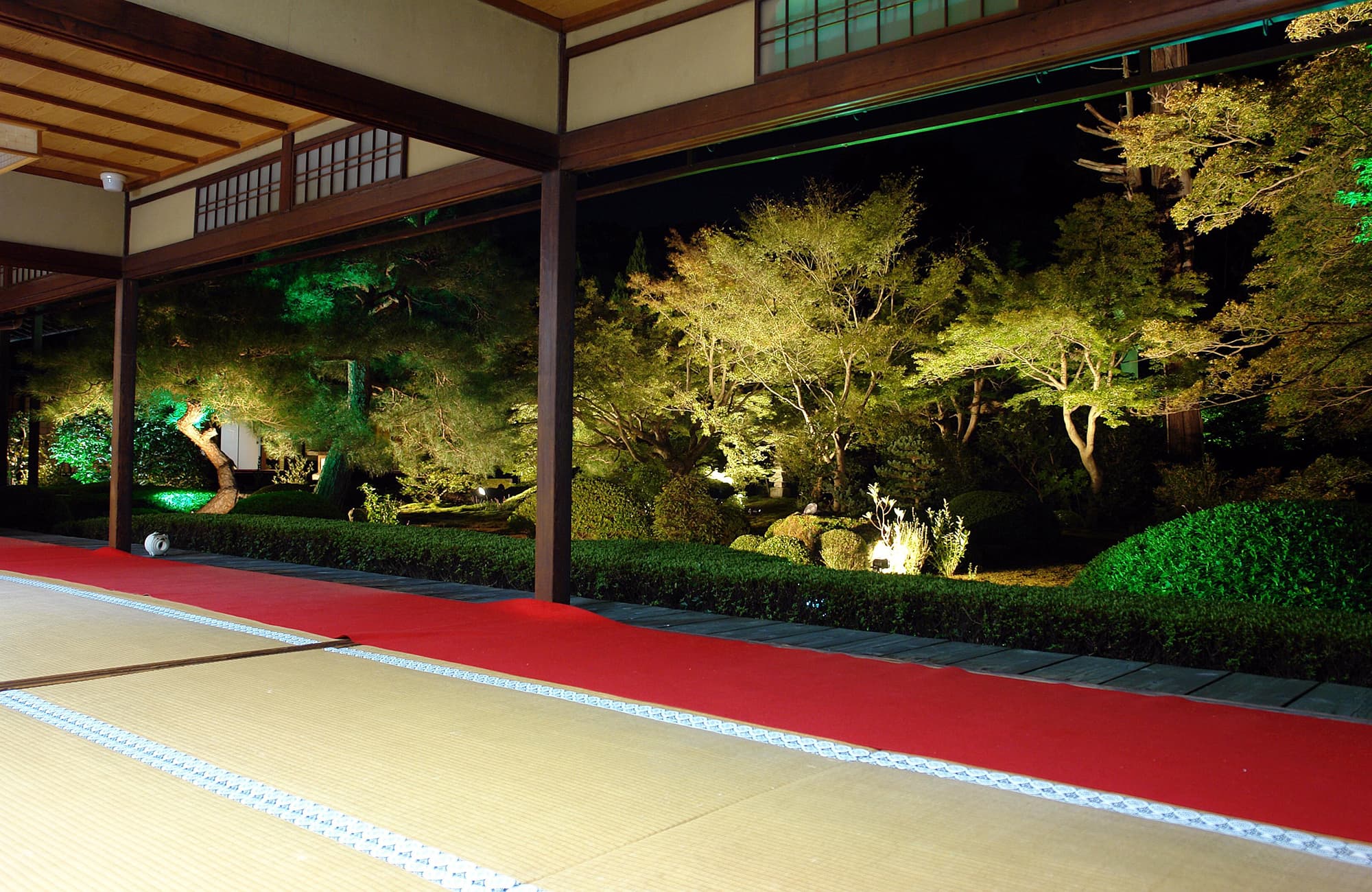
Kyoto, a place of great historical value and popularity among tourists worldwide. However, in recent years, partly due to inbound travel, many famous sightseeing spots have become extremely crowded.
“I’ve visited the well-known places, so where should I go next?” “I want to enjoy the traditional vibe of Kyoto, but I’m not fond of crowds.” “I’d like an experience different from everyone else.”
If that sounds like you, this time we’ll introduce some lesser-known spots in Kyoto. Let’s fully enjoy a side of Kyoto you’ve never seen before…!
目次
- 15 Hidde Gems You Must Visit in Kyoto
- 1. Experience Japanese aesthetics in a nostalgic space at “Unryuin”
- 2. Open your mind with iconic windows at “Genkoan”
- 3. Brilliant blue fusuma paintings at “Kenninji”
- 4. Apply makeup to an ema plaque and become beautiful at “Kawai Shrine”
- 5. Flower-filled “Chozu” that’s perfect for photos at “Yanagidani Kannon Yokokuji”
- 6. Enjoy the sound and coolness of the river at “Kibune Kawadoko”
- 7. Capture retro-style photos! Plenty of photogenic spots at “Nanzenji”
- 8. A curious landform among Japan’s Three Scenic Views: “Amanohashidate”
- 9. A fusion of tradition and innovation at “ShinPuhKan”
- 10. Meet Pikachu in a kimono at the chic “SUINA Muromachi”
- 11. For those who care about nature: “GOOD NATURE STATION”
- 12. A stylish complex by architect Kengo Kuma: “COCON KARASUMA”
- 13. Dine in a Taisho-era public bathhouse at “Sagano-yu”
- 14. Japan’s oldest public art museum revamped: “Kyocera Museum of Art”
- 15. “Kyoto International Manga Museum”
- A One-Day Model Course to Explore Kyoto’s Hidden Gems
- Conclusion
15 Hidde Gems You Must Visit in Kyoto
From temples to gourmet venues to multi-purpose facilities, here’s a wide-ranging introduction.
1. Experience Japanese aesthetics in a nostalgic space at “Unryuin”
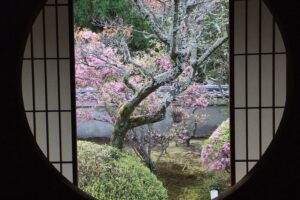
Source: Unryuin
Unryuin is a temple that houses several Important Cultural Properties. It’s conveniently located near Kyoto Station.
Founded in 1372, it is recognized as a special head temple of the Shingon Risshu Senyuji school. It’s also known by another name, “Otera Senyuji Betsuin.”
In the main hall, which has ties to the Imperial Family, you can try the sutra-copying experience that includes matcha.
One of its highlights is the dragon depicted on the entire cover of the goshuin stamp book. Inside the temple, there’s also an impressive dragon painted on a fusuma sliding door.
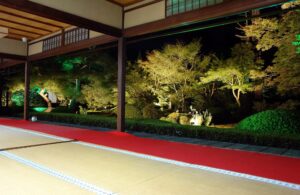
Another highlight is the “Window of Enlightenment and Window of Delusion.” These round and square windows represent Zen teachings. It’s also popular as a spot to view autumn leaves.
Basic Information
| Address | 36, Sennyuji Yamauchi-cho, Higashiyama-ku, Kyoto City |
| Phone Number | 075-541-3916 |
| Hours | 9:00–17:00 (Last entry at 16:30) |
| Closed | Wednesdays (Open daily in November) |
| Access | Approx. 15 minutes on foot from “Sennyuji-michi” City Bus stop |
2. Open your mind with iconic windows at “Genkoan”
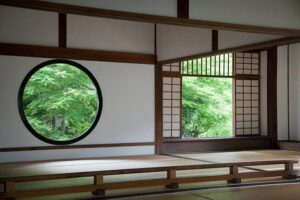
Source: Genkoan
Originally built in 1346 under the Rinzai sect and converted to the Soto sect in 1694, this temple is located in northern Kyoto. You can get there directly by bus from Kyoto Station.
This temple also features the “Window of Enlightenment and Window of Delusion.” In fact, there are only two temples that have these windows—the one mentioned previously and here.
Even in Kyoto, which has numerous temples, there are just two with such windows, making them extremely rare.
The round Window of Enlightenment symbolizes Zen and the spirit of embracing all, while the square Window of Delusion represents the human journey through life. If you have concerns on your mind, standing before these windows might grant you some insight.
Inside the main hall, there is a “Bloody Ceiling,” which has a somewhat alarming name. It serves as a memorial for the souls of those who died in battle long ago.
Basic Information
| Address | 47, Kita-Takamine-cho, Takagamine, Kita-ku, Kyoto City |
| Phone Number | 075-492-1858 |
| Hours | 9:00–17:00 (Last entry at 16:30) |
| Closed | None |
| Access | About 1 minute on foot from “Takagamine Genkoan-mae” City Bus stop |
3. Brilliant blue fusuma paintings at “Kenninji”
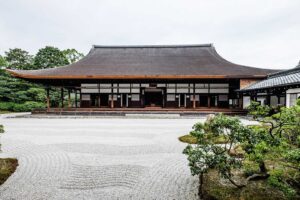 Source: Kenninji
Source: Kenninji
Kenninji , founded in 1202, is said to be the oldest Zen temple in Kyoto and has many devoted fans.
Its most eye-catching artwork is the vivid blue painting titled “Funade” on the temple’s fusuma sliding doors. Completed in 2014, it’s inspired by the waterside landscape of Vietnam. Bright blues like this are quite unusual in a temple setting, which makes them especially striking.
There is also a garden called “Chouontei,” beautifully maintained and offering a serene view. In particular, during the autumn foliage season, the blend of maple leaves and moss creates a calming atmosphere.
Occasionally, there is a special nighttime opening themed “Refresh Your Mind,” where you can experience a walking form of Zen around the corridors while listening to neuro-music. It’s a fascinating event—definitely worth checking out.
Basic Information
| Address | Komatsu-cho 584, Yamato-oji Shijo-sagaru, Higashiyama-ku, Kyoto City |
| Phone Number | 075-561-6363 |
| Hours | 10:00–17:00 (Last entry at 16:30) |
| Closed | April 19 & 20, June 4 & 5, and other closure days for temple events |
| Access | Approx. 5 minutes on foot from “Higashiyama Yasui” City Bus stop |
4. Apply makeup to an ema plaque and become beautiful at “Kawai Shrine”
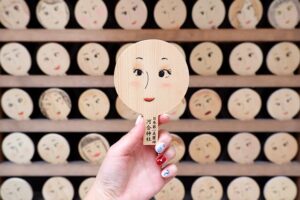
Source: NAVITIME Travel
Kawai Shrine is known for its charming ema plaques depicting a woman’s face. It’s revered for its protection of women and is a sub-shrine of Shimogamo Shrine.
The enshrined deity is Tamayorihime-no-mikoto, the mother of Emperor Jimmu, who was said to be exceptionally beautiful. Hence, she is also called the “Goddess of Beauty.”
The shrine’s amulets feature pastel colors and lace, appealing greatly to women.
The well-known hand-mirror-shaped ema plaques are called “Kagami Ema.” You use your own cosmetics to paint the plaque into your ideal face. Then you write your wishes on the back and pray, seeking beauty inside and out.
When you purchase one of these ema plaques, you also receive “Okuma,” precious rice once offered to the deity. Simply cook it together with your usual rice at home and eat it.
Basic Information
| Address | 59, Shimogamo Izumigawa-cho, Sakyo-ku, Kyoto City |
| Phone Number | 075-781-0010 |
| Hours | 6:30–17:00 |
| Closed | None |
| Access | About 5 minutes on foot from “Shimogamo Shrine-mae” City Bus stop |
5. Flower-filled “Chozu” that’s perfect for photos at “Yanagidani Kannon Yokokuji”
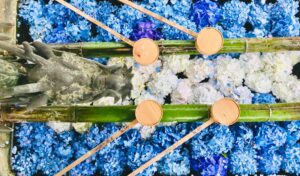
Source: Yanagidani Kannon Yokokuji
This temple is famous for its vibrant “flower chozu,” which changes with each season. It all began with a wish to help visitors not only appreciate history and receive blessings but also engage their five senses for inner peace. How wonderful is that?
It’s especially popular during hydrangea season, as there’s even a path called “Ajisai no Michi” (Hydrangea Path).
Its primary blessing is known to help with eye ailments. Legend has it that a monkey, whose eyes had been blinded, recovered after monk Kukai’s prayers, and the water used to wash its eyes was also blessed as sacred water.
In Japanese, “eye” is pronounced “gan,” so recently prayers for cancer (also read as “gan”) prevention have become popular as well.
Various experiences are available here, such as custom goshuin stamps made with pressed flowers, making beaded bracelets, and “eye yoga.” It’s quite a unique lineup.
Basic Information
| Address | 2, Jodo-dani, Do-no-tani, Nagaokakyo City, Kyoto |
| Phone Number | 075-956-0017 |
| Hours | 9:00–16:00 |
| Closed | None |
| Access | Approx. 15 min by taxi from Hankyu Nishiyama Tennozan Station or JR Nagaokakyo Station |
6. Enjoy the sound and coolness of the river at “Kibune Kawadoko”
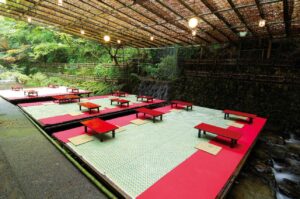 Source: Kyoto Design
Source: Kyoto Design
Near the famous Kifune Shrine, you can enjoy dining on a platform set right over the river. Did you know that?
A summer tradition in the Kansai region, commonly referred to as “Noryo Yuka,” it’s called “Kawadoko” in the Kibune area. Tables are set up so close to the water’s surface that you could stretch out and touch the stream.
Because Kibune sits at a higher elevation, the sound of flowing water only enhances the cooling effect. Over ten restaurants offer river dining, but the most renowned is “Kifune Beniya,” with an impressive capacity of 200 seats. You can enjoy course meals featuring local vegetables and fresh sweetfish.
Basic Information
| Address | (Kifune Beniya) 17, Kurama Kibune-cho, Sakyo-ku, Kyoto 601-1112 |
| Phone Number | 075-741-2041 |
| Hours | 11:00–22:00 (Last order 21:00) |
| Closed | None |
| Access | From Eizan Railway Kibuneguchi Station, take a bus to Kibune or walk for about 20 minutes |
7. Capture retro-style photos! Plenty of photogenic spots at “Nanzenji”
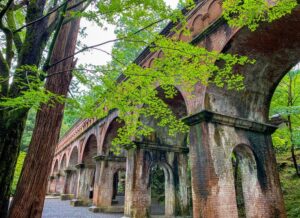
Source: Biwako Canal
Nanzenji is considered the highest-ranked Zen temple. Its grounds feature a massive gate standing 22 meters tall and two distinct gardens, among other facilities.
The waterway bridge on its grounds is particularly famous as a filming and photography location. Carefully designed to blend into the temple setting, it’s constructed of brick and granite in an arch shape. Its muted colors create a nostalgic feel, compelling you to take pictures.
Nearby is the Keage Incline, a former railway site. Built for boat transportation, it boasts the world’s longest slope at 582 meters with a 36-meter elevation difference. It’s designated as a cultural property of Kyoto City.
Basic Information
| Address | 86, Nanzenji Fukuchi-cho, Sakyo-ku, Kyoto City |
| Phone Number | 075-771-0365 |
| Hours | 8:40–17:00 |
| Closed | None |
| Access | Approx. 7 minutes on foot from Subway Keage Station (Exit 1) |
8. A curious landform among Japan’s Three Scenic Views: “Amanohashidate”
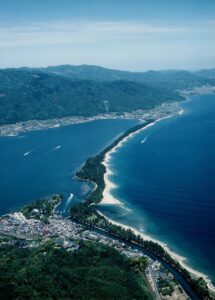
Source: Amanohashidate
Amanohashidate is a long, narrow sandbar created by sand carried by ocean currents. It’s located in northern Kyoto near the Sea of Japan, with multiple spots nearby to enjoy spectacular views.
It’s recognized as one of Japan’s Three Scenic Views, along with Matsushima in Miyagi and Miyajima in Hiroshima, and has also been selected for various “Best 100 in Japan” lists. The scenery is undoubtedly top-notch.
There are several observation decks, but the most popular is Kasamatsu Park. From here, Amanohashidate is said to look like a dragon soaring into the sky, often referred to as the “Ascending Dragon View.” It’s also known as the birthplace of the “mata-nozoki” or “between-the-legs” viewing technique.
You can also walk across Amanohashidate itself. Around 6,700 pine trees grow there, creating a unique, otherworldly landscape.
Basic Information
| Address | Amanohashidate Park, Monju, Miyazu City, Kyoto |
| Phone Number | 0772-22-8030 |
| Hours | Open 24 hours |
| Closed | None |
| Access | Kyoto Tango Railway Amanohashidate Station: about 5 minutes on foot Miyazu Amanohashidate IC: about 10 minutes by car |
9. A fusion of tradition and innovation at “ShinPuhKan”
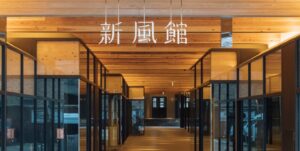 Source: ShinPuhKan
Source: ShinPuhKan
Opened in 2020 on the site of the former Kyoto Central Telephone Office, this complex includes a hotel, various shops, and a movie theater.
Based on the concept of “a fusion of tradition and innovation,” the design incorporates elements of Kyoto’s traditional craftsmanship and stoneworks from the Muromachi period, reflecting the city’s history and culture.
Its main hotel is the first Ace Hotel from the U.S. to open in Japan. Its rooms blend American modernity with Kyoto’s unique charm.
One standout shop is “Hon to Yasai OyOy,” specializing in books about food and organic vegetables—an unusual combination. You can also enjoy healthy soups there.
Basic Information
| Address | 586-2, Bano-cho, Karasuma-dori Anekoji, Nakagyo-ku, Kyoto 604-8172 |
| Phone Number | 075-585-6611 |
| Hours | Varies by store |
| Closed | None |
| Access | Directly connected to the south ticket gate of Subway Karasuma Oike Station |
10. Meet Pikachu in a kimono at the chic “SUINA Muromachi”
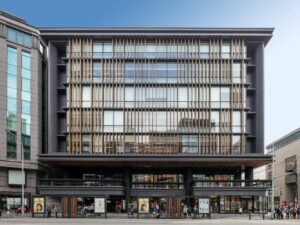 Source: Kyoto Tourist Concierge
Source: Kyoto Tourist Concierge
Opened in 2019, this multi-use space’s name comes from the Kyoto dialect word “suina” (meaning “chic”). It’s located inside the Kyoto Economic Center building.
It features a food hall, a bookstore, and a Pokémon Center.
The food hall is on the first basement floor, conveniently accessible from the Shijo Station (Subway) and Karasuma Station (Hankyu) without stepping outside. Offerings range from Japanese cuisine to Mexican and Chinese.
The bookstore’s selections focus on “Seasonal Kyoto,” so you might find unique books not commonly seen elsewhere.
At the Pokémon Center, you’ll be greeted by Pikachu in a kimono. There are also exclusive goods—a dream for Pokémon fans!
Basic Information
| Address | 78, Kankoboko-cho, Shijo-dori Muromachi Higashi-iru, Shimogyo-ku, Kyoto 600-8009 |
| Phone Number | 075-746-2211 |
| Hours | 11:00–22:00 |
| Closed | None |
| Access | Directly connected from Exit 26 of Hankyu Kyoto Line “Karasuma Station” |
11. For those who care about nature: “GOOD NATURE STATION”
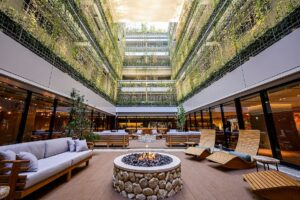 Source: GOOD NATURE STATION
Source: GOOD NATURE STATION
This facility opened in 2019, featuring markets, restaurants, cafés, and beauty brands under the “GOOD NATURE” concept of “good for both people and the environment.”
In the market, you’ll find organic vegetables and the in-house food brand “SIZEN TO OZEN.” They occasionally hold fun events like filling a bag with as many potatoes as you can and offering cacao tea samples.
Don’t miss the sweets brand “RAU,” displayed in an unconventional manner with no glass cases. Its pastries also look astonishingly creative. Some are in shapes or colors you’ve never seen before, sure to pique your curiosity.
The entire building is designed with cohesive elements like music, signage, and art, linking all areas together.
You’ll also spot the letter “O” from the word “GOOD” hidden throughout the building. It might be fun to compete with friends to see who can find more of them!
Basic Information
| Address | 318-6, Inari-cho, Shimogyo-ku, Kyoto 600-8022 |
| Phone Number | 075-352-3712 |
| Hours | Varies by store |
| Closed | Varies by store |
| Access | • About 2 minutes on foot from Kyoto Kawaramachi Station (Exit 5) • About 5 minutes on foot from Gion Shijo Station (Exit 3) on the Keihan Main Line |
12. A stylish complex by architect Kengo Kuma: “COCON KARASUMA”
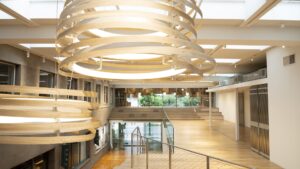
Source: COCON KARASUMA
Originally built on the site of the Kyoto Marubeni Building, “Kokin Karasuma” underwent its first renovation in 17 years in 2021, refreshing its first and second floors.
It was designed by renowned architect Kengo Kuma, known for utilizing wood extensively, resulting in an open, warm atmosphere.
The original structure used concrete appropriate for Marubeni, a kimono (textile) trading company that once led fashion culture. At the time, it was reportedly Kyoto’s first modern concrete building.
Though replacing old materials with new ones would be easier, they’ve painstakingly restored and preserved them, maintaining the building’s original charm.
Now the basement to the third floor serve as a commercial area. Centered on the concept of “making everyday life a bit more luxurious,” it houses restaurants, interior shops, galleries, and more.
Basic Information
| Address | 620, Suiginya-cho, Shijo Karasuma Nishi-iru, Shimogyo-ku, Kyoto 600-8411 |
| Phone Number | 075-352-3800 |
| Hours | Varies by store |
| Closed | None |
| Access | • Subway Karasuma Line “Shijo Station” (Exit 2) directly connected to Shijo Karasuma West • Hankyu Kyoto Line “Karasuma Station” (Exit 23) directly connected through Sumitomo Mitsui Trust Bank Exit, or (Exit 25) through the bank’s Shijo Exit • “Shijo Karasuma” City Bus stop, just a short walk away |
13. Dine in a Taisho-era public bathhouse at “Sagano-yu”
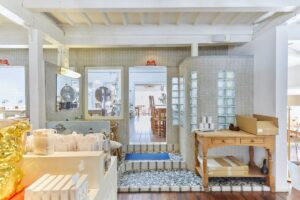
Source:
rurubu web
From the name, you might guess it’s a bathhouse, but it’s actually a café! Located near the tram station and renovated from an old bathhouse, it exudes a retro charm.
Inside, the bright space is predominantly white and beautifully clean. The first floor is a retail area, and the second floor is a café. Both areas offer a taste of Kyoto flair, and the café’s popular menu item is tofu pasta.
If you look closely, you’ll notice old bath faucets, mirrors, and signs still intact, revealing its origins. The tiles are also said to be the original ones from the Taisho era, carefully polished to their present shine.
Hunting for these lingering bathhouse elements is part of the fun!
Basic Information
| Address | 4-3, Sagatenryuji Imahoricho, Ukyo-ku, Kyoto |
| Phone Number | 075-882-8985 |
| Hours | 11:00–18:00 |
| Closed | None |
| Access | Approx. 1 minute on foot from Randen Saga Station or JR Saga-Arashiyama Station |
14. Japan’s oldest public art museum revamped: “Kyocera Museum of Art”
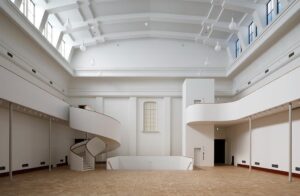 Source: Kyocera Museum
Source: Kyocera Museum
Renovated in spring 2020, the Kyocera Museum of Art actually opened in 1933, making it the oldest existing public art museum building in Japan. Now, it has gained a new appeal by blending modern features with its historic architecture.
The interior is primarily white, giving it a stylish, European-like atmosphere wherever you look. The spiral staircase adds a soft, graceful touch.
It also has public spaces like terraces, gardens, and cafés, making it enjoyable even if you’re just strolling around.
Its collection focuses on Kyoto art from the modern era onward, showcasing about 4,400 works. Observe the delicate expressions characteristic of Japanese culture.
Basic Information
| Address | 124, Okazaki Enshojicho, Sakyo-ku, Kyoto 606-8344 |
| Phone Number | 075-771-4334 |
| Hours | 10:00–18:00 |
| Closed | December 28–January 2 |
| Access | • About 8 min on foot from Subway Tozai Line Higashiyama Station • About 16 min on foot from Keihan Sanjo Station or Subway Tozai Line Sanjo Keihan Station |
15. “Kyoto International Manga Museum”
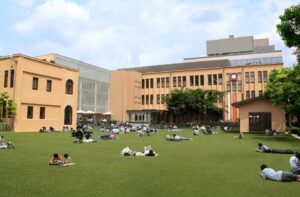
Source: Kyoto Official Travel Guide
Opened in 2006, the Kyoto International Manga Museum is relatively new. Created specifically for preserving manga—now a global phenomenon—it may be one of the only museums of its kind.
Operated jointly by the City of Kyoto and Kyoto Seika University, it serves both museum and library functions. It houses a vast manga collection, including both classic materials and popular modern works, some of which are available to read freely.
At first glance, the building might look like a college campus. That’s because it’s located in a former elementary school. On sunny days, you can read manga on the lawn, enjoying pure bliss.
Basic Information
| Address | Karasuma-dori Oike-agaru, Nakagyo-ku, Kyoto |
| Phone Number | 075-254-7414 |
| Hours | 10:00–17:00 (Last entry at 16:30) |
| Closed | Wednesdays (next day if it’s a public holiday), maintenance periods, and New Year holidays |
| Access | • Subway Karasuma Line / Tozai Line “Karasuma Oike” Station, north exit (Exit 2), immediately nearby • City Bus routes 15, 51, 65, “Karasuma Oike” bus stop, right there |
A One-Day Model Course to Explore Kyoto’s Hidden Gems
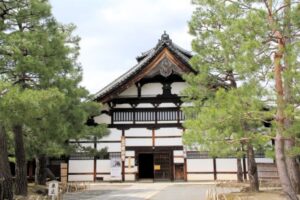
Source: Souda, Kyoto Ikou
Now, let’s propose a one-day itinerary that includes the hidden spots introduced above.
10:00 Start your walk from Nanzenji

Source: Souda, Kyoto Ikou
Nanzenji is best visited first thing in the morning, when there are fewer people, making it easier to snap photos.
Known for photogenic spots like its grand Suirokaku (aqueduct) and the nearby Keage Incline, it’s wise to go early if you want to get pictures. You’ll often see people wearing pale-colored kimonos posing for photos.
Nanzenji and Keage Incline are within walking distance of each other.
12:00 Have lunch & art appreciation at the Kyocera Museum

Source: Kyocera Museum
How about having lunch at the café inside the museum? “ENFUSE,” created after the renovation, has large windows offering a wonderful sense of openness.
Even on cloudy days, the interior feels bright because natural light floods the space. You can also see the massive torii gate of Heian Shrine from the windows.
Its menu features dishes made with locally sourced ingredients. There’s even a picnic plan that allows you to take your meal outside within the museum grounds or around the Okazaki area—check it out!
After your meal, enjoy the art exhibits. Don’t forget to appreciate the architecture itself.
15:30 Immerse in history at Kenninji

Source: Kenninji
Don’t miss the classic Kyoto atmosphere at Kenninji, which boasts a long history. From its impressive gardens to colorful fusuma paintings, there’s plenty to see.
You can also rest for a while on the veranda or challenge yourself to zazen (seated meditation) or sutra-copying to clear your mind.
17:00 Wrap up with shopping at ShinPuhKan

Source: ShinPuhKan
Many temples close earlier in the day, so heading to a commercial complex in the late afternoon lets you relax without worrying about closing times. After shopping, if you still want to chat, you can enjoy a meal at a café or restaurant.
ShinPuhKan is conveniently connected to the station, making it easy to part ways afterward.
Conclusion
This time, we introduced several hidden gems in Kyoto, ranging from historical temples to newly renovated multi-purpose facilities and art museums. We hope you’ve discovered some fresh charm in this city.
Kyoto’s popularity continues to grow, especially with inbound tourism, so it’s constantly evolving and adding new points of interest.
Even if you’ve been there before, you might find new delights if you visit again after a few years. We hope this guide proves helpful for your next trip!

